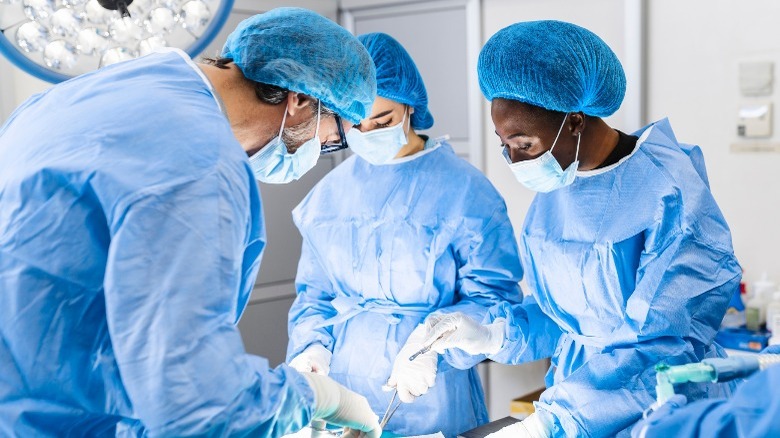What To Expect When You Go For A Breast Lumpectomy
Feeling a lump in your breast can be scary. This is understandable considering that the experts at BreastCancer.org report that breast cancer is the most common type of cancer among American women. Roughly 13% of women will be diagnosed with invasive breast cancer during their lifetime and over 43,000 women are forecasted to die of the disease in 2022.
According to the health experts at Cedars Sinai, breast cancer screenings are a life-saving measure, and can reduce breast cancer deaths by up to 50%. Dr. Cynthia A. Litwer, a radiologist at Cedars-Sinai, says that diagnosis of breast cancer as early as possible will reduce extensive treatment. She advises that all women get an evaluation determining their risk for breast cancer at age 30.
One of the options your doctor may advise if you find a lump in your breast is a mammogram, which can detect if your breast tissue has changed. Following a mammogram, your doctor may also suggest an MRI for more information, per Cedars-Sinai. Or your doctor may suggest a breast biopsy. Biopsy lab results typically reveal with certainty if your breast lump is cancerous and can also confirm the type of cancer (via Healthline).
This is what happens during a breast lumpectomy
The good news is that, according to Stony Brook Cancer Center, around 80% of breast lumps turn out to be benign (not cancerous). However, if you have a biopsy and the results come back positive, your doctor will likely present you with a few options to consider, and a breast lumpectomy may be one of them.
According to the experts at the Mayo Clinic, a lumpectomy is a surgical approach that doctors perform as a way to save the breast and maintain its appearance. During a lumpectomy, a surgeon removes the cancerous tissue and a little bit of the healthy tissue surrounding it in order to make sure that they removed the cancerous cells in their entirety. During the surgery, you will typically be under general anesthesia and your surgeon will close the incision with dissolvable sutures or you will return to have the stitches removed by your surgeon. You will also see your surgeon for a follow-up about one to two weeks after your surgery regarding lab results and any next steps.
Like any surgery, a lumpectomy carries some risks, such as scarring of the surgical site, some change of appearance in the breast, and infection, among others. Also, be prepared for the possibility of your doctor suggesting radiation therapy following your lumpectomy, as studies have shown that radiation is an effective treatment to prevent a recurrence, per Mayo Clinic.


